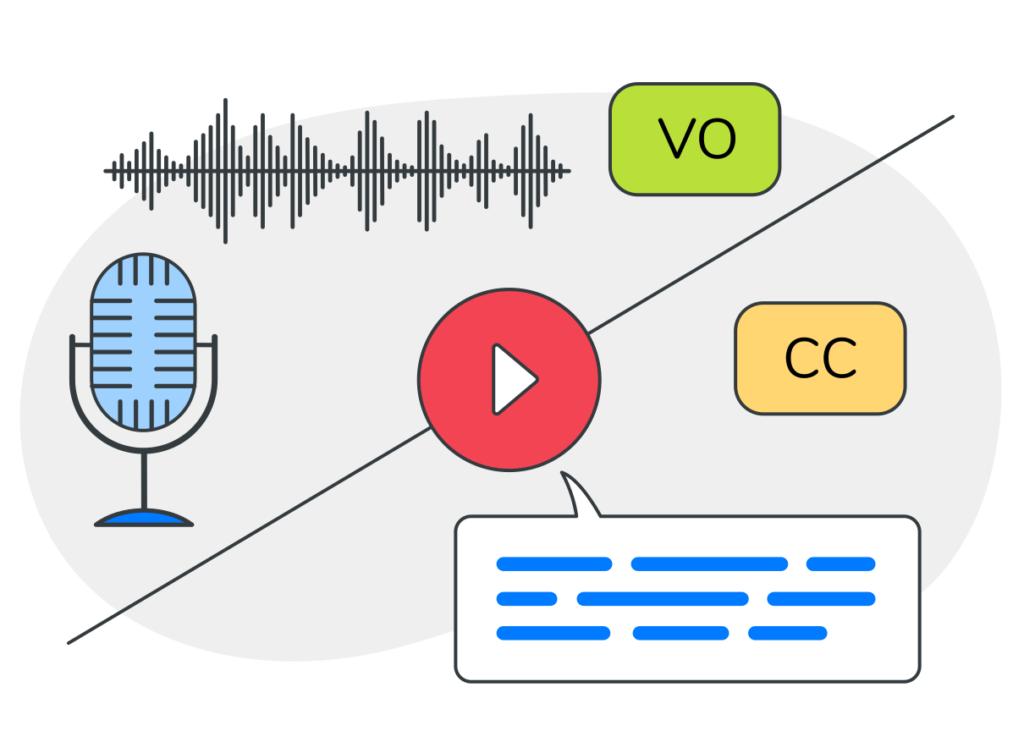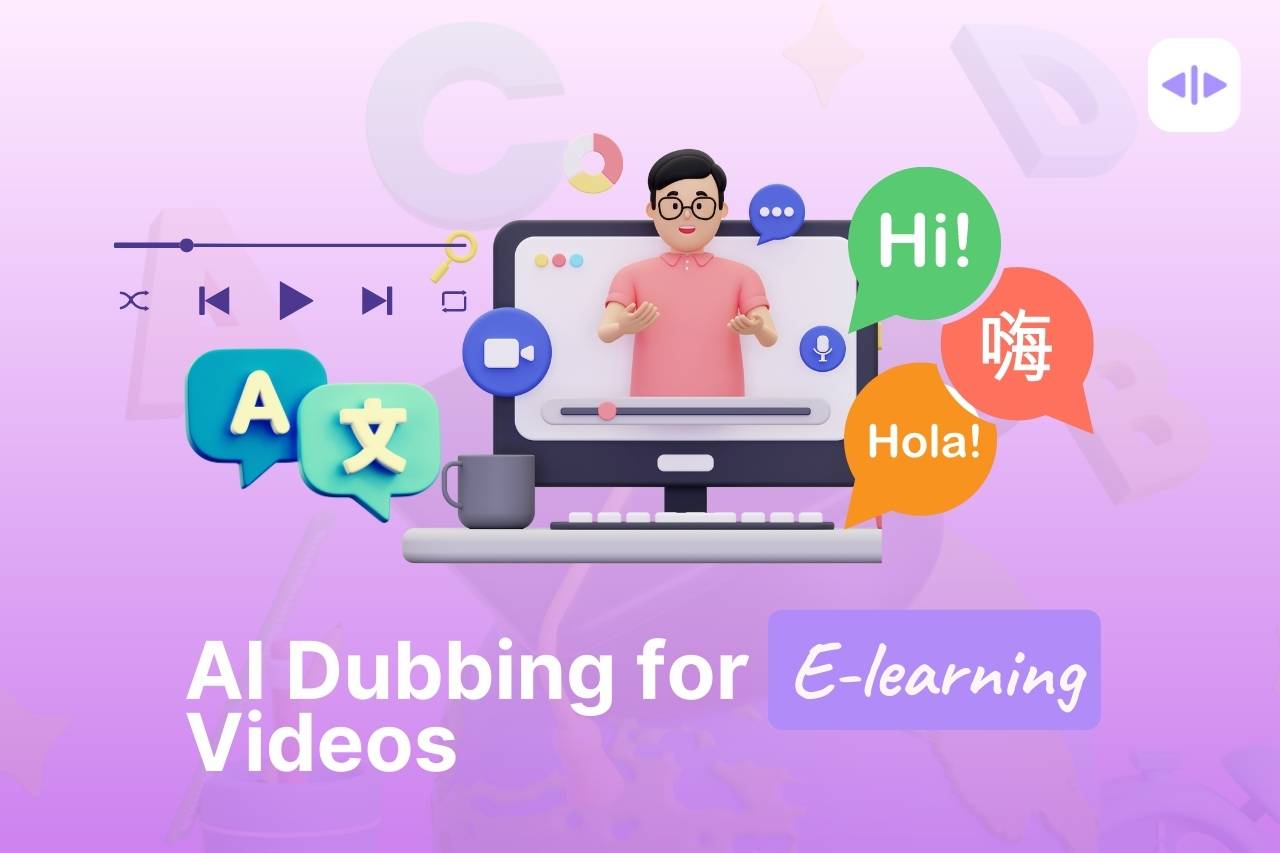Did you know that by 2025, the e-learning market is expected to reach a whopping $325 billion? And you can be a part of this massive growth by merely tapping into a global audience with the help of translation and dubbing services. But, as a content creator, you might be wondering how to manage such tasks without breaking the bank or spending countless hours on manual translation. That’s where Artificial Intelligence (AI) comes in to save the day!
In this post, we’ll explore the advantages of AI dubbing, dive into the world of video translation, and discuss how to harness these powerful tools to create stellar educational content for the global e-learning market. So, let’s get started!
Importance of Video Dubbing in the E-Learning Industry

As the e-learning industry grows, so does the demand for easily accessible and engaging educational content. With 67% of internet users being non-English speakers, there is a need for localized content. Dubbing helps bridge the language barrier, allowing learners to access valuable educational resources in their native tongue. Moreover, over 1 billion people worldwide experience some form of disability; providing captions and subtitles can help make educational content accessible to this substantial group as well.
Increased Reach and Engagement
Translating your e-learning videos ensures that your content reaches a larger audience and resonates with the target demographic. Studies have shown that people are more likely to engage with and retain information presented in their native language. Therefore, addressing the language barrier is a crucial step in increasing the impact and credibility of your content in the global e-learning market.
Enhances Cross-Cultural Understanding
Video dubbing fosters better communication and understanding among people from different cultural backgrounds. By offering content in multiple languages, you’re enabling learners to explore a wider range of viewpoints and perspectives. This cross-cultural appreciation can lead to better collaboration and empathy both online and offline, fostering global harmony.
What is AI Dubbing and Why Content Creators Need It?
AI dubbing represents the convergence of cutting-edge technology and language translation. It entails using software powered by Machine Learning (ML) and Natural Language Processing (NLP) algorithms to translate and synthesize human-like speech. This makes the process of adding translated voice overs to educational videos a breeze.
Both subtitling and dubbing are valuable for creating multilingual e-learning content; however, dubbing offers an unparalleled learning experience. It allows learners to focus on the visual elements of the video without having their attention constantly diverted by reading the subtitles. This greatly enhances the user experience and understanding of the content.
Traditional dubbing methods can be time-consuming, labor-intensive, and expensive. However, with AI-enabled dubbing tools, content creators can save both time and resources while reaching a wider audience. Employing AI for video translation and dubbing ensures higher efficiency and quality compared to manual methods.
Benefits of Using AI for Educational Video Translation and Dubbing

- Time and Cost Savings: AI-powered voice-over services can dramatically reduce turn-around time compared to hiring actors, booking studios, and manually syncing audio with visuals. This can save content creators both time and money, allowing them to allocate their resources elsewhere.
- Greater Flexibility: Creators get greater control over the process to customize voices, accents, and intonation, making video localization seamless and effortless.
- Improved Accuracy and Consistency: AI translation engines are designed to provide accurate translations, ensuring that your e-learning content is consistent and coherent across different languages. This minimizes the possibility of misinterpretation and confusion among your learners.
A lot of creators rely on YouTube’s auto-generate captions; however, they are just 60-70% accurate.
- Enhanced Accessibility: Multilingual videos with AI-powered dubbing make e-learning content more accessible to a diverse audience, including those with hearing impairments. This goes a long way in helping content creators cater to a broader audience and achieve inclusivity within the e-learning sphere.
- Scalability: AI dubbing solutions are more scalable compared to traditional methods, allowing content creators to efficiently meet demands as their e-learning platform grows and expands.
Mistakes to Avoid When Using AI for Video Dubbing
- Over-dependence on AI: While AI offers incredible accuracy and capabilities, it’s essential to remember that it’s not perfect. Faulty translations can happen, so you should always have human oversight to ensure the final translated product is of the highest quality.
Dubverse is a creators-oriented platform that offers on-demand professional reviews to its users.
- Ignoring Cultural Nuances: It’s important to account for cultural differences when you dub video content to prevent misinterpretations or misunderstandings. You can also work with native speakers to evaluate translated scripts and address any potential cultural discrepancies.
- Choosing the Wrong AI Solution: Not all AI dubbing tools are created equal. Research and compare options, considering factors like accuracy, ease of use, and quality of localized voice overs before committing to a software solution.
- Focusing on Quantity over Quality: Rapidly translating and dubbing video content with AI might improve your reach, but delivering subpar translations or poor voice overs affects the overall learning experience. Strive to maintain the highest quality throughout the video dubbing process to keep your audience engaged.
Strategies for Implementing AI in E-Learning Video Creation
- Start Small: Experiment with AI-driven dubbing tools on a small scale to get familiar with the technology and evaluate its effectiveness for your specific needs.
- Test and Iterate: Be prepared to make changes to your workflows and strategies as you gain more experience. Evaluate your translated and dubbed videos, gather feedback from your audience, and make adjustments as needed.
- Incorporate Human Expertise: Involve language and cultural experts at various stages of your project to ensure the highest quality translations and culturally appropriate content.
- Stay Up-to-Date with AI Advancements: As AI technologies progress, it’s essential to stay informed and adapt to new developments, as these could significantly benefit your content creation process.
Are You Ready To Dub Your Learning Videos?
The e-learning market is growing at an unprecedented pace, and content creators have a remarkable opportunity to make a global impact. By leveraging AI for video translation and dubbing, content creators can reach a broader audience, enhance user experiences, and efficiently scale their e-learning platform to match market demands. It’s time to embrace these technologies and tap into the potential of the global e-learning market.


